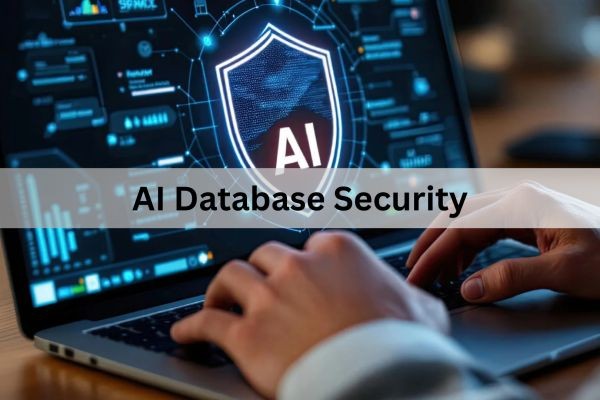AI for database security offers both innovation and risk, revealing strategies for C-suite leaders to stay ahead of attackers while managing Emerging AI Threats. In today’s rapidly evolving digital landscape, executives are redefining their approach to database security, recognizing that artificial intelligence can transform cybersecurity operations by detecting anomalies, pre-screening breaches, and strengthening governance. At the same time, AI introduces new attack surfaces and ethical challenges, making responsible, large-scale implementation critical.
AI Matters Now
Databases are under unprecedented pressure. Threat actors exploit AI to develop polymorphic malware and zero-day exploits faster than security teams can respond. Traditional defenses struggle to keep pace, and alert fatigue costs billions, especially in identity-related incidents. AI Database Security systems now provide real-time analysis, identifying abnormal patterns that human analysts may miss. Regulatory initiatives, such as the EU Cyber Resilience Act and evolving U.S. cybersecurity mandates, further emphasize the need for AI-driven controls that support compliance and reduce operational burden. AI is no longer optional—it is essential.
Threat Detection on Steroids
AI Risk Management strengthens predictive and pattern recognition capabilities, allowing organizations to proactively detect suspicious queries, credential anomalies, and lateral movement before incidents escalate. Machine learning-powered firewalls and security operations centers can dynamically learn and respond in real time. For example, a Fortune 500 financial company reduced its mean-time-to-detect (MTTD) by 60% through AI deployment. Early applications in healthcare and retail show that AI helps uncover insider threats that could remain hidden for months without automated monitoring.
Data Governance Gets Smarter
Executives worry about regulatory complexity, but AI can automate data classification and discovery, scanning both structured and unstructured data to identify sensitive information accurately. AI Database Security solutions combined with generative models and synthetic data allow organizations to test breach conditions safely, ensuring compliance while minimizing risks. Beyond defense, AI strengthens governance, giving leaders confidence in their cybersecurity posture.
AI Arms Race Unleashed
The AI-driven cybersecurity landscape is double-edged. Attackers leverage AI to make phishing campaigns more convincing, deepfakes more authentic, and malware self-adaptive. Industry forecasts suggest that nearly 40% of breaches by 2027 may involve misuse of generative AI tools. Organizations must incorporate offensive testing approaches to anticipate these Emerging AI Threats. Defensive strategies alone are insufficient; proactive and adaptive AI-based Database Security Strategies are necessary.
Can You Trust the Machine?
Executives cannot afford blind trust in AI. Algorithms depend on data quality; biased or manipulated inputs can lead to false positives or negatives. Over-reliance on automation risks missing contextual threats, while ethical concerns arise from large-scale data collection for model training. Effective AI Risk Management requires transparency, explainability, and human oversight, ensuring AI complements rather than replaces human expertise.
Budget and Talent Integration Hurdles
AI security solutions promise transformative ROI, but adoption is complex. High costs, integration with legacy systems, and talent scarcity challenge organizations. The global cybersecurity workforce gap exceeded four million in 2024, and AI expertise remains limited. Boards must invest strategically in both technology and skilled personnel to fully realize AI Database Security benefits.
Answering Executive Doubts
Executives frequently ask: Will AI disrupt existing systems? Only if implemented hastily; staged integration and human-in-the-loop auditing are key. Is AI governance feasible at scale? Yes, through federated learning, differential privacy, and explainability frameworks. Are we increasing our attack surface? Continuous adversarial testing and layered security architectures mitigate risks.
Tactical AI Roadmap
To maximize AI’s potential while avoiding pitfalls, organizations should pair AI with human judgment, start small, scale smart, and invest in leadership literacy. Begin with AI-based threat detection and anomaly flagging, then expand into automated incident response. Boards must understand AI mechanics to govern its deployment effectively.
What 2028 Looks Like
By 2028, AI-governed zero-trust ecosystems will dynamically control access based on real-time risk assessment. Generative AI will simulate previously unknown attack vectors, allowing preemptive system hardening. AI will evolve into a security-first framework, embedding adversarial resilience and transparency at every level. Forward-looking organizations will treat AI Database Security not just as a defensive tool, but as foundational infrastructure for cyber resilience.
AI for database security is no longer a futuristic concept—it is a present-day necessity and a strategic differentiator. Success depends on viewing AI as both a tool and a challenge, investing in algorithms, governance, literacy, and organizational culture. The question isn’t whether AI will reshape cybersecurity; it’s whether your organization will lead or lag in this critical transformation.
Explore AITechPark for the latest insights on AI, Cybersecurity, Database Security Strategies, and Emerging AI Threats from industry experts.

